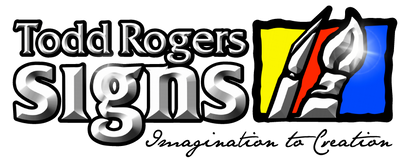RGB vs CMYK vs HEX vs Pantone: Decoding the Colour Code
Hey there, colour aficionados! 🎨 Ever found yourself tangled in the web of colour codes and wondered what the heck RGB, CMYK, HEX, and Pantone actually mean? Well, you're in luck! Today, we're breaking down these colour systems and why they're essential for designers. Let's dive into the colourful world of RGB, CMYK, HEX, and Pantone!
RGB: The Digital Dynamo
First up, we have RGB, which stands for Red, Green, and Blue. This colour model is the go-to for anything digital. Your computer screen, smartphone, and TV all use RGB to display colours. Here's the lowdown:
- How It Works: RGB colours are created by combining different intensities of red, green, and blue light. The more light you add, the brighter the colour gets. When all three colours are at their maximum intensity, you get white.
- Where It's Used: RGB is perfect for digital designs, websites, and anything that will be viewed on a screen.
- Fun Fact: The RGB colour model can produce over 16 million different colours! 🌈
CMYK: The Print Powerhouse
Next, we have CMYK, which stands for Cyan, Magenta, Yellow, and Key (Black). This colour model is the champion of the print world. If you're printing flyers, business cards, or posters, CMYK is your best friend.
- How It Works: CMYK colours are created by subtracting light. When you combine cyan, magenta, and yellow, you get black (or close to it). Adding black ink (the "Key") helps achieve deeper, richer blacks.
- Where It's Used: CMYK is used for any printed materials. It's essential for ensuring your colours look just as vibrant on paper as they do on your screen.
- Pro Tip: Always convert your digital designs to CMYK before sending them to print to avoid any colour surprises!
HEX: The Web Wizard
Now, let's talk about HEX, short for hexadecimal. This colour code is a staple in web design and development. If you've ever dabbled in HTML or CSS, you've probably encountered HEX codes.
- How It Works: HEX codes are six-digit combinations of numbers and letters that represent RGB colours. For example, #FF5733 is a bright orange.
- Where It's Used: HEX codes are used in web design to specify colours in HTML and CSS. They're super precise and ensure your colours look consistent across different browsers.
- Cool Fact: HEX codes are actually shorthand for RGB values. Each pair of digits represents the intensity of red, green, and blue.
Pantone: The Colour Connoisseur
Last but not least, we have Pantone. The Pantone Matching System (PMS) is the gold standard for colour consistency. It's like the secret sauce that ensures your colours look the same no matter where they're printed.
- How It Works: Pantone colours are standardized and given unique codes. This system allows designers and printers to match colours exactly, ensuring consistency across different materials and locations.
- Where It's Used: Pantone is used in branding, packaging, and any project where colour accuracy is crucial. It's especially popular in industries like fashion and interior design.
- Fun Fact: Pantone announces a "Colour of the Year" every year, setting trends and inspiring designers worldwide.
Conclusion
So, there you have it! RGB, CMYK, HEX, and Pantone each play a unique role in the world of design. Whether you're working on a digital masterpiece, a print project, or a web design, understanding these colour systems is key to making your colours pop.
Next time you're choosing colours for a project, remember the strengths of each system. RGB for digital, CMYK for print, HEX for web, and Pantone for precision. Happy designing, and may your colours always be spot on!



